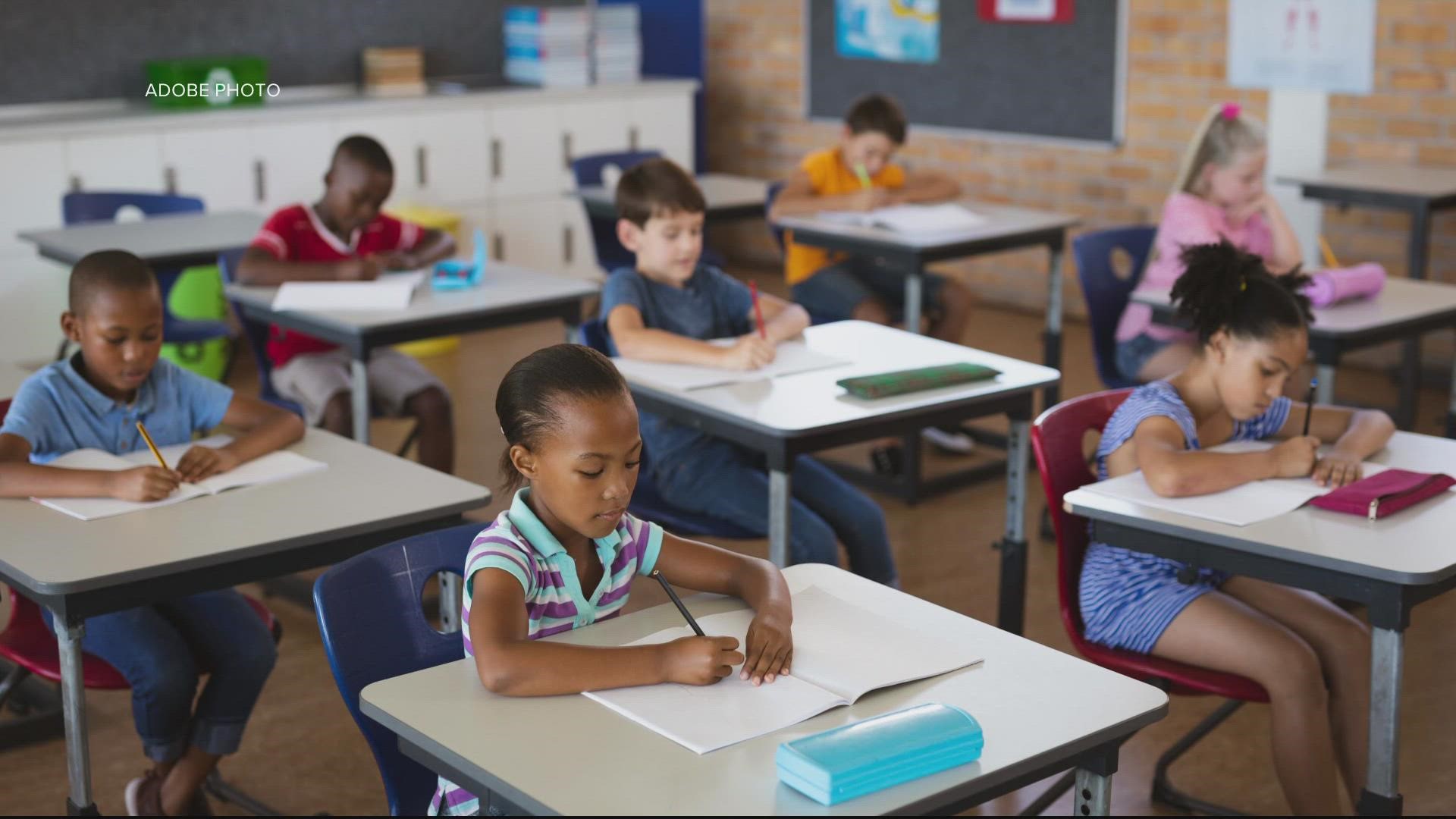WASHINGTON — Less in-person instruction and more at-home distractions: that was the reality for millions of U.S. students throughout the COVID-19 pandemic.
The results were inevitable: the biggest drop in math and reading test scores in decades, according to the National Center for Education Statistics. Students in D.C., Maryland and Virginia were not immune to these disruptions, and test score data mirrors the national trend.
All the while, students of color showed disproportionately higher drops in academic proficiency levels. Let’s break down the numbers.
THE QUESTION:
Did testing scores for students of color fall more compared to their white peers in the DMV?
THE SOURCES:
THE ANSWER:
Yes, testing data shows that most students of non-white ethnic and racial groups in D.C. and Virginia had larger drops in proficiency levels compared to white students.
Maryland administered a modified version of its standardized test during the 2021-2022 school year, and the state does not provide a comprehensive overview of all students at public schools, meaning it is difficult to draw an accurate conclusion from the data.
WHAT WE FOUND:
It is first important to note that the standardized tests issued by all three jurisdictions are not the same.
In D.C., students take both the Partnership for Assessment of Readiness for College and Careers (PARCC) and Multi-State Alternate Assessment (MSAA), students in Virginia take the Standards of Learning and Testing (SOL) assessment and Maryland students use the Maryland Comprehensive Assessment Program (MCAP).
Note that Virginia also used a less rigorous proficiency standard for the 2021-2022 school year. It is also unclear how exactly each state determines what constitutes “proficiency.”
That said, data summaries from D.C. and Virginia do show that all grade levels saw drops in proficiency for math and language skills, and students of colors saw the biggest dips.
According to The DC Office of the State Superintendent of Education, English language art (ELA) proficiency scores declined from 37% in the 2018-2019 school year to 31% for the 2021-2022 school year across all grade levels. Math proficiency dropped from 31% in 2019 to just 19% in 2022.
In Virginia, students who “passed” the reading section of the tests dropped from 78% in 2018 to 73% in 2022 across all grade levels, according to the Virginia Department of Education. Passing math scores also dipped: from 82% to 66% in that timeframe.
Most students of color in both states were particularly hit hard.
For English scores in D.C., Black students dropped by 7.7% compared to a 7% decrease for Hispanic students and a 5.3% drop for white students. In math, there was a 12% drop for Black students, a 13.4% drop for Hispanic students and an 8.7% drop for white students.
In Virginia, students’ passing rates for reading fell by 5% for Black students, 6% for Hispanic students and 3% for white students. Passing math scores fell by 21% for Black and Hispanic students and 12% for white students.
While we can’t provide a comprehensive overview of Maryland’s testing results, the data available paints a more complicated picture: in some cases, white students’ proficiency levels took the hardest hit.
For example, the proficiency ELA levels for all 3rd graders was 24.1% for the 2020-2021 school year (the most recent year) compared to 41.2% in 2019. Black students saw a 12.2% drop, Hispanic students' levels dropped by 14.7%, and white students' scores dropped by 21.4%, but white students on average still had a higher overall proficiency level for this age group at 34.7% compared to 14.5% for Black students and 11.9% for Hispanic students.
Again, this is just one age group and only looks at ELA. You can check out the data for yourself for the pre-COVID scores here and you can find the data for post-COVID scores here.
So, we can confirm that students of color in D.C. and Virginia did see larger drops in academic proficiency compared to their white peers. At the moment, we cannot confirm this for Maryland students.

